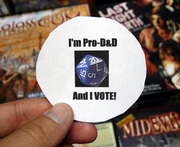28. Control of the Blue Line and its vicinity appears to have remained for the most part with Hizbollah. During the reporting period, Hizbollah maintained and reinforced a visible presence in the area, with permanent observation posts, temporary checkpoints and patrols. It continued to carry out intensive construction works to strengthen and expand some of its fixed positions, install additional technical equipment, such as cameras, establish new positions close to the Blue Line and build new access roads. These measures resulted in a more strategically laid out and fortified structure of Hizbollah’s deployment along the Blue Line. Some Hizbollah positions remained in close proximity to United Nations positions, especially in the Hula area, posing a significant security risk to United Nations personnel and equipment, as demonstrated during the heavy exchanges of fire on 28 May. In letters to the Foreign Minister, dated 23 March, 27 June and 5 July 2006, the Force Commander, General Pellegrini, expressed grave concern about the Hizbollah construction works in close proximity to United Nations positions and requested that the Government of Lebanon take necessary actions to rectify the situation. However, the situation remained unchanged despite repeated objections addressed by UNIFIL to the Lebanese authorities. UNIFIL observed the reconstruction of Hizbollah positions that were damaged or destroyed during the 28 May exchange of fire.Reading the rest of the report, available on the UN site here in pdf format, is amazing. The UN forces have watched, recorded, and done very little other than talk to the Government of Lebanon about the state of things in Southern Lebanon. They have noted a build-up of Hezbollah forces in the region and the inadequate efforts of the Government of Lebanon at mainting control over its own borders.
29. UNIFIL encountered an increase of temporary denials of access by Hizbollah in different areas along the Blue Line. On one occasion Hizbollah searched a UNIFIL vehicle and temporarily confiscated United Nations equipment. In general, the Force was able to regain and assert its freedom of movement within a short period of time and, in some instances, with the assistance of the Lebanese authorities.
It is also interesting to see how the author of the report is self-congratulatory about the accomplishments of the mission, i.e. confirming the withdrawal of the IDF from Lebanon (almost 6 years ago) and assisting the return of Lebanese government authority, to a a limited extent, in the area. However, the mission of UNIFIL also included "restore the international peace and security" to the region. In 28 years, they have failed in that miserably.
This brings me back to paragraphs 28 and 29 of the report. If the job of the peacekeepers is to restore the international peace and security, what are they doing by allowing Hezzbollah from establishing fighting positions so close to UNIFIL positions?
 If the report is accurate, then why did the UN not take measures to ensure that either the peacekeepers were not there or that the Hezbollah terrorists were not there? At what point does the UN admit it has failed in its mission and allow a nation the right to defend itself?
If the report is accurate, then why did the UN not take measures to ensure that either the peacekeepers were not there or that the Hezbollah terrorists were not there? At what point does the UN admit it has failed in its mission and allow a nation the right to defend itself?(Hat tip to Captain's Quarters)





No comments:
Post a Comment